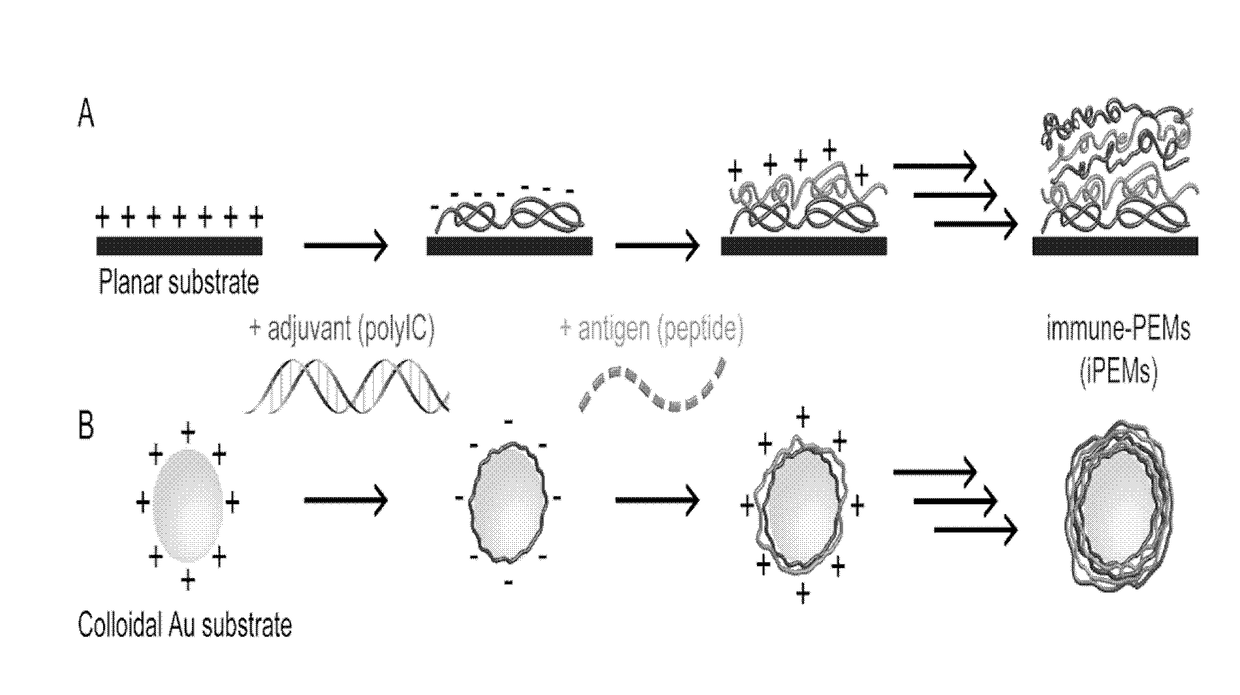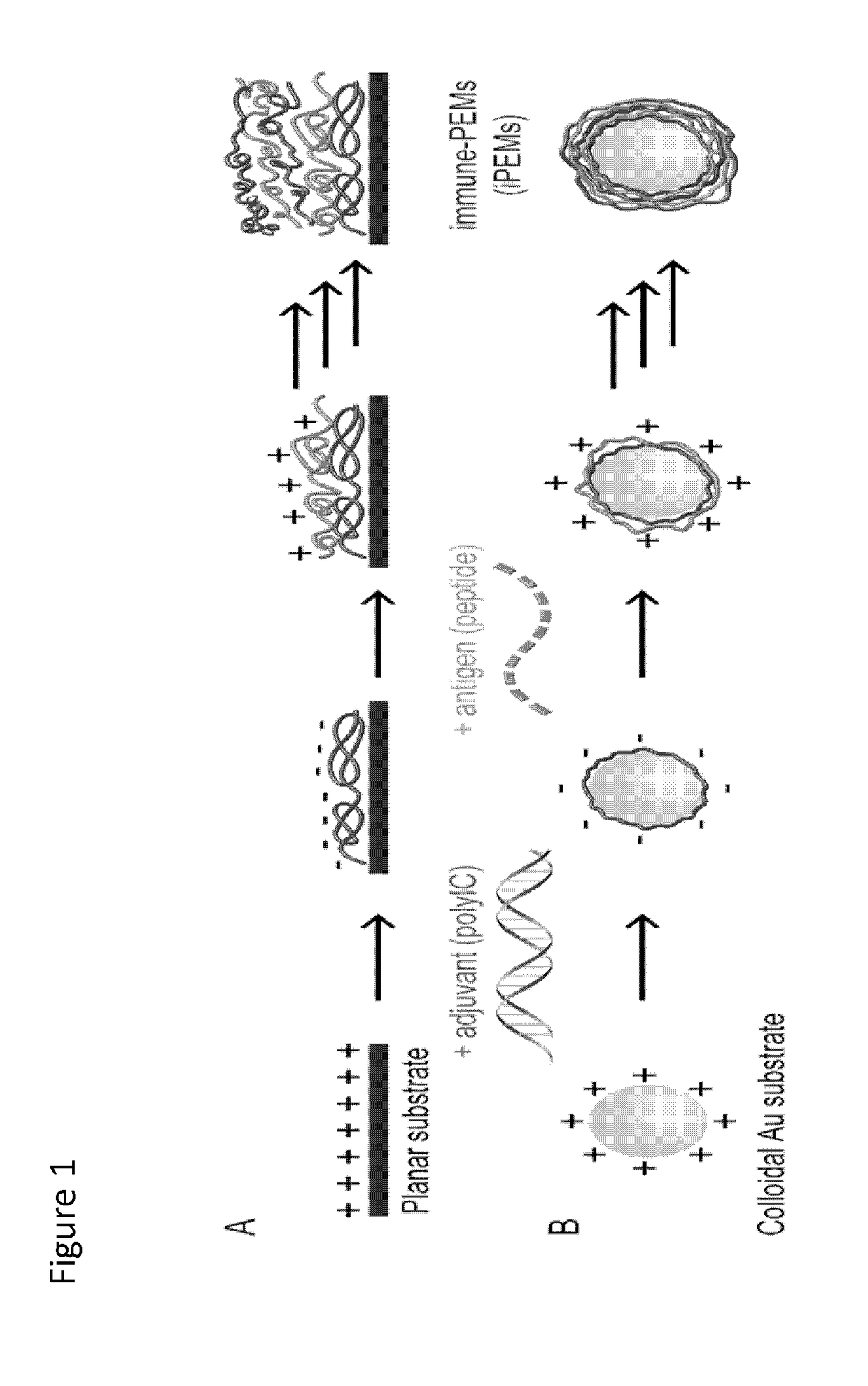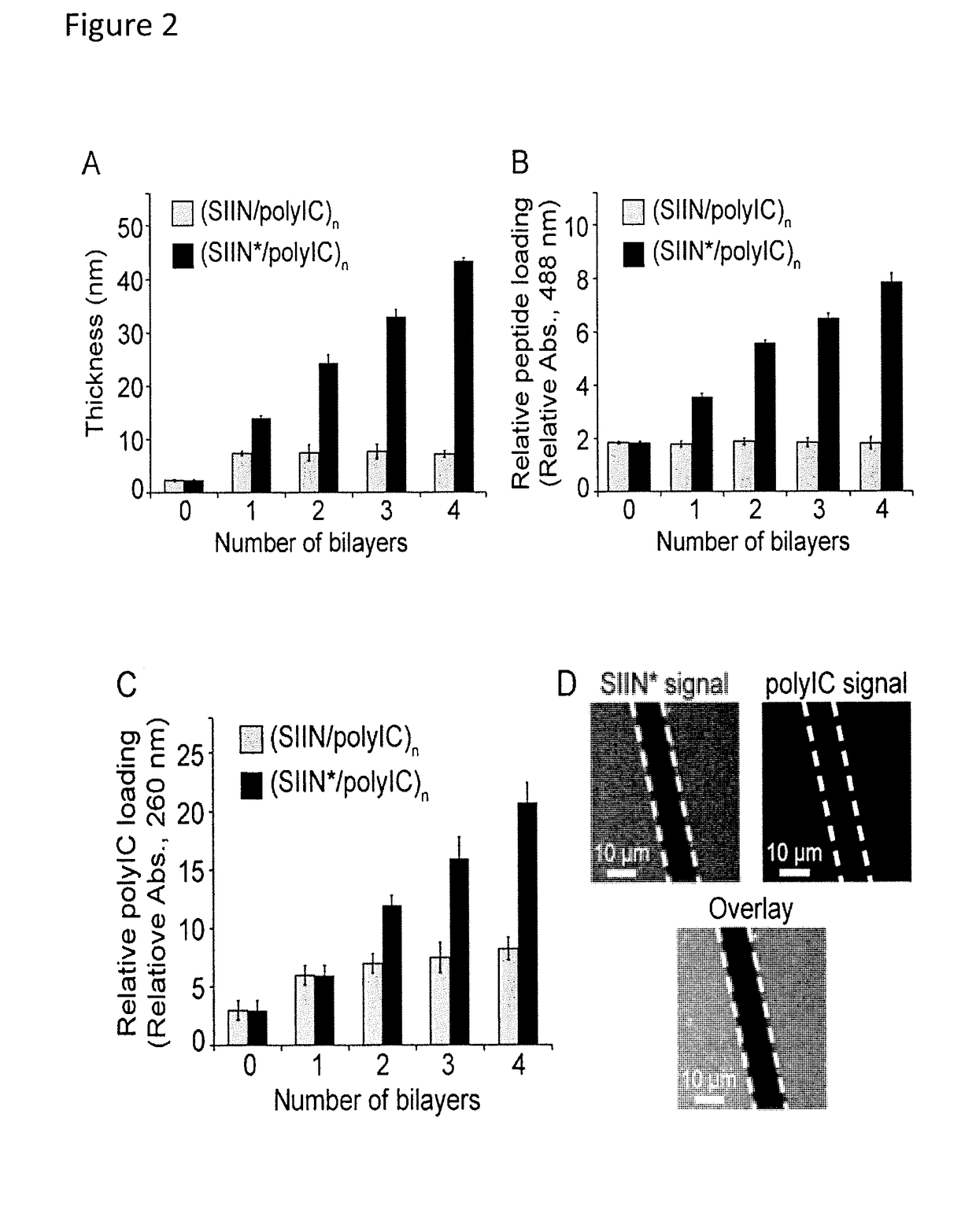Polyelectrolyte multilayers assembled from immune signal compounds
a technology of polyelectrolyte and immune signal, which is applied in the field of polyelectrolyte multilayers assembled from immune signal compounds, can solve the problems of affecting the rational design and translation of vaccines, the empirical and economic infeasibility of characterizing and testing the multitude of new vaccines and other immune-modulatory candidates, and the inability to meet the requirements of immune characteristics, so as to reduce or eliminate the potential confounding intrinsic properties of synthetic polymers
- Summary
- Abstract
- Description
- Claims
- Application Information
AI Technical Summary
Benefits of technology
Problems solved by technology
Method used
Image
Examples
example 2
[0112]This Example expands on Example 1 and describes a platform for simplifying iPEM design and evaluation by electrostatically-assembling stable vaccine capsules solely from immune signals, and without other supports. These iPEMs capsules mimic many features of biomaterials (e.g., tunable sizes, co-delivery), enhance vaccination by increasing the density and programmability of immune signals, and eliminate components that can exhibit poorly defined immunogenic characteristics (e.g., synthetic materials).
[0113]iPEM capsules are assembled through alternate deposition of peptide antigens and toll-like receptor agonists (TLRas) as adjuvants (FIG. 13A). As described above, this process is all aqueous and does not require heating, cooling, or mixing. iPEMs are built on a sacrificial core in an LbL manner and are comprised of polyinosinic-polycytidylic acid (polyIC)—an immunostimulatory double stranded RNA (i.e., TLR3 agonist)—and antigenic peptides from a common model antigen, ovalbumin...
example 3
[0137]This Example provides a non-limiting example of making and using iPEMs to induce tolerance.
[0138]As discussed above, the iPEM structure enables co-location and subsequently, co-delivery of immune signals to generate tolerance, e.g. expansion of antigen-specific regulatory T cells, which can be significant in this aspect of the disclosure because delivering a first immune signal compound comprising the antigen without the second immune signal compound could cause inflammation or result in lack of efficacy. In this regard, many synthetic carriers activate the inflammasome or other inflammatory pathways, which are effects that could exacerbate autoimmune disease. The presently provided iPEMs offer a original platform for controlling the individual ratios of each component, to co-deliver multiple signals, and to tune particle size or other physical characteristics, but without need for a synthetic carrier component. These features allow for programming immune tolerance by assembli...
PUM
| Property | Measurement | Unit |
|---|---|---|
| Composition | aaaaa | aaaaa |
| Immunogenicity | aaaaa | aaaaa |
Abstract
Description
Claims
Application Information
 Login to View More
Login to View More - R&D
- Intellectual Property
- Life Sciences
- Materials
- Tech Scout
- Unparalleled Data Quality
- Higher Quality Content
- 60% Fewer Hallucinations
Browse by: Latest US Patents, China's latest patents, Technical Efficacy Thesaurus, Application Domain, Technology Topic, Popular Technical Reports.
© 2025 PatSnap. All rights reserved.Legal|Privacy policy|Modern Slavery Act Transparency Statement|Sitemap|About US| Contact US: help@patsnap.com



